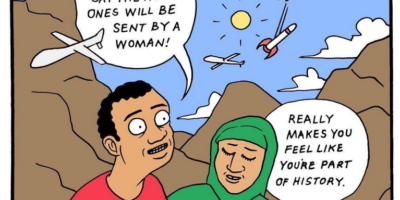Learning a New Art Form to Tell the Story of James Baker Hall
By Whitney Baker
When I asked James Baker Hall if I could do a film on his life, his work, his teaching, I imagined a viewer who didn’t know life could be transformed through writing and art. At one time, I was that person, locked in to a cycle of confusion, rehashing the same unresolved stories and arguments about life, death, beauty and destruction. Without giving ourselves the right to be surprised by creation and re-creation, we spin our wheels, and our resentments entrench rather than pass away.
Jim helped us understand art’s role in letting go of old ideas and opening one’s self to new ones. He agreed to let me make the film. The only issue was, I knew nothing about making a film.
I thought that if I must, I could charge about $2,000.00 on my credit cards to get a camera, then borrow time on someone’s computer. I knew Jim’s former student and assistant Sarah Wylie Ammerman, who was in San Francisco getting her M.F.A, well enough to send her an email and ask her advice on the best camera I could get for that dollar figure. At some point, I asked if she was would be able to come home and help with the film over the summer. She agreed. Little did I know how crucial she would be in the life of the film. I had a lot to learn about the joy, frustration and triumph of collaboration. I was a poet and painter; collaboration was not my department.
The first person I called for funding was Griffin VanMeter. Griffin secured $10,000 for a killer HD camera and a Mac the size of a file cabinet. So far, so good. Now all we had to do was make a film. “How,” I was secretly thinking to myself, “the hell does one do that?”
I figured the piece wouldn’t be more than an hour or so, but how to make it that short? James Baker Hall could take ten minutes to recite a poem from memory, thirty minutes to talk about why he won’t drink coke out of can. How to summarize such a man? To add to that the reminiscences of former students, friends, and colleagues, and still more, footage of Jim and his wife Mary Ann Taylor-Hall’s amazing house and outlying studios and their daily lives seemed to be too much.
I believe it was when the subject of Jim’s unseen art film came up that we realized that the film could not be all things to all people. It was then I decided the film would not be “about” the subject, but “of” it. As my heart had whispered to me all along, the aim was to distill Jim’s spirit.
Making Elbow of Light take shape
A few seminal images persisted. Once while visiting Jim and Mary Ann, I saw him at his sink shaving, his shirt off. I found the vulnerability of that image undeniable. I asked Sarah Wylie to shoot Jim shaving. Our first try was with an electric razor, but it was not what I wanted. She shot him again, with a conventional razor, and washing his hair in the sink, with his face reflected in the mirror. It is one of the most beautiful pieces of film making I have seen.
When I saw that, the fun meter spiked. She went on to get one beautiful piece of footage after another. And, as luck would have it, my more amateurish efforts at filming worked compatibly. We could see that we had a yin and yang of footage, the artful played against the rough and immediate.
After a film is conceptualized and footage is gathered, the work begins in editing. We had about twenty 43-minute tapes. I pored over them, listening, re-listening, making notes on a spreadsheet. From there we pulled the selections into a very rough time-line to begin piecing something together. Editing is exhausting, painstaking, thrilling work. With the headphones clamped on, alone for hours on end, one begins biting big chunks of footage and spitting them onto a new time-line.
We had to trace many roads to their dead ends. I shot hours of footage of willing volunteers reading Jim’s work, and hours literally just wandering around. We, mostly me, were flying by the seat of our pants. Sarah Wylie was beyond patient and cooperative. We were sniffing, sniffing. “Where is it,” I kept thinking, “where is this film?” At some point, I had something pasted together while Sarah Wylie was back in San Francisco for a few weeks. I screened it for some friends. To summarize their reactions: “Man, that sucks.” It was too vague, too impressionistic, too impatient. While I always wanted to be done now, Sarah Wylie and Griffin were willing to wait.
Because we had no script and no storyboard, there was no obvious order. We had to listen to what the footage had to say. I would work, then hand it over to Sarah Wylie. She would then suggest, edit, re-edit, move. I remained the director, that is, I had final say, but finally it became clear that what had started as my film about Jim had become our film. The scenes were talking to one another. Together, Elbow of Light began to take shape.
In addition to our other challenges, we had shot the film in all kinds of light, artificial and natural. I had no idea what all the buttons on the camera meant. The best I could do was lay a sheet of white cardboard on the ground to try and bounce some sun into the shadows on my subject.
One crucial feature I fumbled was focus. One night I went to interview Jim and Mary Ann in their house after dark. We had little light. Jim was addressing a particularly sensitive subject, and I was keen on using the zoom. Unfortunately, I didn’t know how. When I got home, it turned out the auto-focus was on (and off and on), and Jim, Mary Ann and the white couch were orange. But, because fate sometimes smiles on us, it was all perfect. The focus did its job when Jim’s comments were most poignant, and the color was, inexplicably, ideal. It couldn’t have been planned.
We were learning all the time. The Final Cut Pro software offers all kinds of tools, most of which I had no idea how to use. In many ways, the program is brilliantly intuitive. Whatever seems the easiest is usually the way to go. However, just beyond the horizon of drag-and-drop and scissors is the byzantine mystery of compression, color balance, and sound. Ignorance ruled.
What I had was instinct. I knew when something felt right. I knew my subject. I had help and I was willing to be wrong and wrong again. Paradoxically, hunches, failings and weaknesses became the steps necessary to make my first real film.
POSTSCRIPT
Elbow of Light will premiere Friday, April 30, 2010 at the Black Box Theatre in the Downtown Arts Center at 141 E Main St.
5pm – First Screening
6:30 – 7:30pm – Reception
7:30pm – Second Screening
Tickets $6 (pay what you can)
The screening is being sponsored by Lexarts Fund for the Arts and the pay what you can tickets are being sponsored by PNC Bank, through Lexarts.
PULL OUT QUOTES
I was a poet and painter; collaboration was not my department.
What had started as my film about Jim had become our film.



Eric Spangler
Very cool I really hope I can catch this film sometime. I can’t be at the premiere but I really hope I get a chance to see it somewhere. Im sure it is a great piece.
Good Luck Whitney.
Eric